UNC Observatories
![]()
Southern Astrophysical Research Telescope, Chile
The SOAR Telescope project was initiated by UNC to further astrophysical research by its faculty and students, and as an aid in teaching and public outreach. SOAR’s workhorse instrument, the Goodman High Throughput Spectrograph, was built here at UNC. The telescope, located on Cerro Pachon, Chile, is our primary resource for student and faculty research. We receive 60 guaranteed nights of observing time per year, accessed remotely from a control room in Chapman Hall.
![]()
Southern African Large Telescope
SALT is currently the largest single telescope in the southern hemisphere, with a hexagonal mirror array 11 meters across. SALT can record distant stars, galaxies and quasars a billion times too faint to be seen with the unaided eye – as faint as a candle flame at the distance of the moon. UNC receives 11 nights of guaranteed observing time per year in queued mode.
![]()
Panchromatic Robotic Optical Monitoring and Polarimetry Telescopes
With support from NSF, UNC-CH has build six special-purpose telescopes at the Cerro Tololo Inter-American Observatory (CTIO) in the Chilean Andes. These telescopes (called PROMPT), which have been specifically designed to identify and study the most distant objects in the universe, also serve as a platform for undergraduate and high school education throughout the state of North Carolina. UNC has a large fraction of the observing time on the PROMPT array, accessed remotely in a queue through the SkyNet Robotic Telescope Network interface that was developed here at UNC.

Evryscope All Sky Survey
The Evryscope (“wide-seer”) is an array of telescopes pointed at every part of the accessible sky simultaneously and continuously, together forming a gigapixel-scale telescope to monitor an 8,000 square degree field every 2 minutes. Operating at CTIO beside the PROMPT telescopes since May 2015, over its first year it collected 60 TB of data.
![]()
Morehead Observatory – Chapel Hill, North Carolina
The astronomical observatory atop the Morehead Observatory houses a 0.6m (24″) professional Perkin-Elmer telescope. Chapel Hill is not Chile or Arizona but skies can often be clear enough for graduate and undergraduate students to obtain useful data and experience that helps them prepare to use research instruments elsewhere. The telescope is equipped with several CCD cameras, including one attached to a stellar spectrometer. This telescope, like those that make up the PROMPT array, can be controlled remotely to execute observing requests submitted through UNC’s SkyNet network. Morehead is also used to host observatory guest nights for the public.

